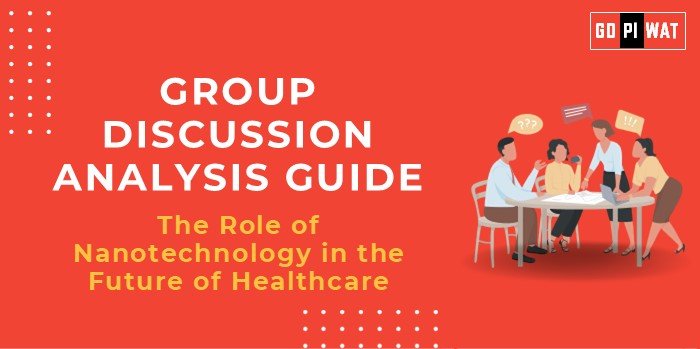📋 Group Discussion Analysis Guide: The Role of Nanotechnology in the Future of Healthcare
🌐 Introduction to Nanotechnology in Healthcare
Nanotechnology, the manipulation of matter at the atomic and molecular scale, is poised to revolutionize healthcare by enabling unprecedented precision in diagnostics, treatments, and drug delivery systems. Its integration with medicine and biotechnology is expected to lead to groundbreaking advancements in targeted therapy, minimally invasive surgery, and early disease detection.
📊 Quick Facts and Key Statistics
- 🌍 Global Market Size: The global nanomedicine market is projected to reach $410.15 billion by 2030, expanding at a compound annual growth rate (CAGR) of 11.57% from 2023 to 2030.
- 💊 Drug Delivery Impact: Nanotechnology enhances drug delivery systems, improving the bioavailability and targeting of therapeutics, thereby reducing side effects and increasing treatment efficacy.
- 🎗️ Cancer Treatment: A significant portion of nanomedicine research focuses on oncology, aiming to develop nanoparticles that can deliver chemotherapeutic agents directly to tumor cells, minimizing damage to healthy tissues.
- 💸 Research Funding: The United States has been investing in nanotechnology since the development of the National Nanotechnology Initiative in 2000, with the total proposed investment reaching $2.2 billion in 2024.
- 🏅 Commercial Success: Nanotechnology-based drugs like Doxil (for cancer treatment) showcase commercial viability, setting the stage for further developments.
🔍 Stakeholders and Their Roles
- Government and Regulatory Bodies: Support research, establish safety standards, and regulate clinical applications.
- Healthcare Providers and Medical Researchers: Develop and test applications in diagnostics, imaging, and targeted therapies.
- Pharmaceutical and Biotechnology Companies: Invest in research and development for innovative nanomedicine solutions to treat complex diseases.
- Patients and Advocacy Groups: Benefit from targeted therapies and push for advancements in safety and accessibility.
- Academic Institutions: Drive foundational research and technology transfer, often partnering with industries.
🏆 Achievements and Challenges
Achievements:
- 🎯 Targeted Drug Delivery: Nanoparticles can deliver drugs directly to specific cells, reducing side effects and improving treatment efficacy.
- 🔬 Minimally Invasive Surgery: Nano-robots and nanoscale tools allow for surgeries with less damage to surrounding tissues.
- 📈 Enhanced Diagnostic Tools: Nano-imaging offers high resolution, early diagnosis, crucial for managing conditions like cancer.
Challenges:
- ⚠️ Safety and Toxicity: Ensuring nanoparticles are biocompatible to prevent adverse reactions or toxicity is a challenge.
- 💰 High R&D Costs: Development costs are significant, impacting affordability and accessibility.
- 📜 Regulatory Hurdles: Nanomedicine lacks standardized regulations, causing delays in approvals and market entry.
🌍 Global Comparisons: Countries like the U.S., Japan, and South Korea lead in funding and implementing nanotechnology in healthcare.
📚 Case Study: The U.S. FDA-approved Doxil demonstrates nanotechnology’s commercial and therapeutic potential in cancer treatment.
📣 Structured Arguments for Discussion
- Supporting Stance: “Nanotechnology enhances healthcare’s precision and effectiveness, significantly improving patient outcomes through targeted therapies and early detection.”
- Opposing Stance: “High costs, limited accessibility, and unresolved safety issues in nanomedicine may limit its broader application and impact on healthcare systems.”
- Balanced Perspective: “While nanotechnology promises advancements in healthcare, balancing innovation with safety and accessibility remains essential.”
📑 Effective Discussion Approaches
- Opening Approaches:
- 📊 Start with the economic and healthcare market size of nanotechnology.
- 🎗️ Introduce the impact of nanotechnology on specific diseases, like cancer.
- 🏅 Present a real-world example, such as Doxil’s success in oncology.
- Counter-Argument Handling:
- 💬 Address concerns about costs by discussing potential economies of scale as technology matures.
- 🔍 Highlight collaborative efforts in safety research to mitigate toxicity concerns.
📊 Strategic Analysis of Strengths and Weaknesses
- Strengths: Targeted treatment options, improved diagnostics, minimized side effects, and minimally invasive procedures.
- Weaknesses: High costs, regulatory delays, and potential toxicity.
- Opportunities: Market expansion, cross-industry collaborations, and new treatments for previously untreatable conditions.
- Threats: Regulatory restrictions, public safety concerns, and financial accessibility barriers.
📚 Connecting with B-School Applications
- Real-World Applications: Possible projects could involve evaluating nanotech investment for pharmaceutical companies or case studies on drug delivery innovations.
- Sample Interview Questions:
- 💡 “How can nanotechnology address current challenges in healthcare?”
- 💡 “What role can business and government partnerships play in advancing nanomedicine?”
- Insights for B-School Students: Gain a multidisciplinary understanding of nanotechnology, consider its business and ethical implications, and explore innovative financing models for high-cost technologies.


